
|
arduino IDEArduino
|
Make Your own Nodemcu Standlone
The ESP8266 is a system on a chip (SOC) Wi-Fi microchip for Internet of Things (IoT) applications produced by Espressif Systems.
Given its low cost, small size and adaptability with embedded devices, the ESP8266 is now used extensively across IoT devices. Although it’s now been succeeded by the newer generation ESP32 microcontroller chip, the ESP8266 is still a popular choice for IoT developers and manufacturers.
In this article, we’ll explain the main features of ESP8266 modules and development boards and their application within the world of IoT.
What is the ESP8266?
The ESP8266 module enables microcontrollers to connect to 2.4 GHz Wi-Fi, using IEEE 802.11 bgn. It can be used with ESP-AT firmware to provide Wi-Fi connectivity to external host MCUs, or it can be used as a self-sufficient MCU by running an RTOS-based SDK. The module has a full TCP/IP stack and provides the ability for data processing, reads and controls of GPIOs.
ESP8266 Functions
ESP8266 has many applications when it comes to the IoT. Here are just some of the functions the chip is used for:
Networking: The module’s Wi-Fi antenna enables embedded devices to connect to routers and transmit data
Data Processing: Includes processing basic inputs from analog and digital sensors for far more complex calculations with an RTOS or Non-OS SDK
P2P Connectivity: Create direct communication between ESPs and other devices using IoT P2P connectivity
Web Server: Access pages written in HTML or development languages.
ESP8266 Applications
The ESP8266 modules are commonly found in the following IoT devices:
Smart security devices, including surveillance cameras and smart locks
Smart energy devices, including HVACs and thermostats
Smart industrial devices, including Programmable Logic Controllers (PLCs)
Smart medical devices, including wearable health monitors
Chip versus Modules versus Development Boards
As discussed above, the ESP8266 is just the name of the chip. There are essentially three formats you can buy this in:
ESP8266 Chip: This is the basic chip manufactured by Espressif, which comes unshielded and needs to be soldered onto a module. This is unsuitable for most users, apart from perhaps volume device manufacturers that can factor this into the production process under the unit cost of a module.
ESP8266 Modules: These are the surface-mountable modules that contain the chip, which are ready to be mounted onto an MCU, produced by Espressif, Ai-Thinker and certain other manufacturers. They are usually shielded and pre-approved by the FCC for use. This means they’re a good option for device manufacturers looking to scale production.
ESP8266 Development Boards: These are the complete IoT MCU development boards that have the modules preinstalled. They’re used for developers and manufacturers to create prototypes during the design stage, before they start production. Development boards are produced by several different manufacturers and the specifications differ between models. Some core specifications to be aware of when assessing ESP8266 IoT development board options include:
GPIO pins
ADC pins
Wi-Fi antennas
LEDs
Shielding*
Flash Memory
*Many international markets require shielded Wi-Fi devices, as Wi-Fi produces considerable Radio Frequency Interference (RFI), and shielding minimizes this interference. This should, therefore, be a key consideration for all developers and embedded-device manufacturers.
Which is the best ESP8266 Module or Development Board for IoT?
As the above comparisons show, there are many options available with ESP8266 IoT boards and modules. To help you with your decision making, we’ve summarized some of the most popular below.
Popular ESP8266 Modules
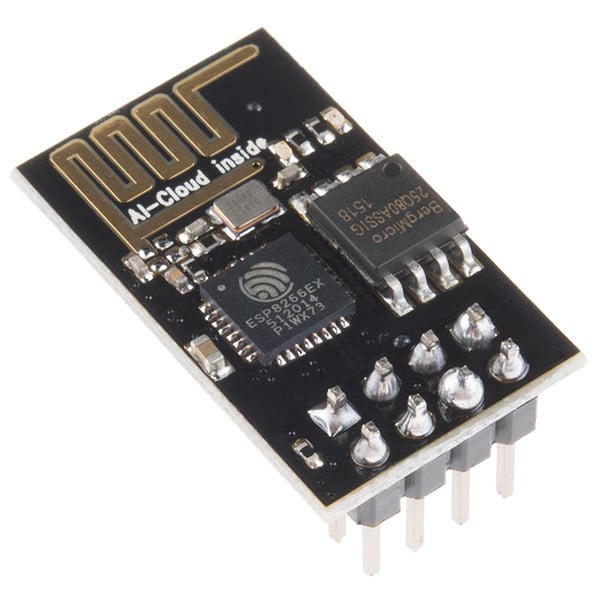
Ai-Thinker ESP-01
The ESP-01 is one of the biggest selling IoT Wi-Fi modules on the market. It’s widely used in smart home and networking projects.
The default AT firmware enables it to be used in combination with an Arduino. However, you can easily update the firmware with a USB-to-ESP-01 adaptor module.
A common complaint with this board is that the pin posts make it difficult to plug it directly into a breadboard, but this can be easily overcome by building or buying an adaptor module.
There are two versions available, one with 500kb of flash and the other with 1Mbit of flash.
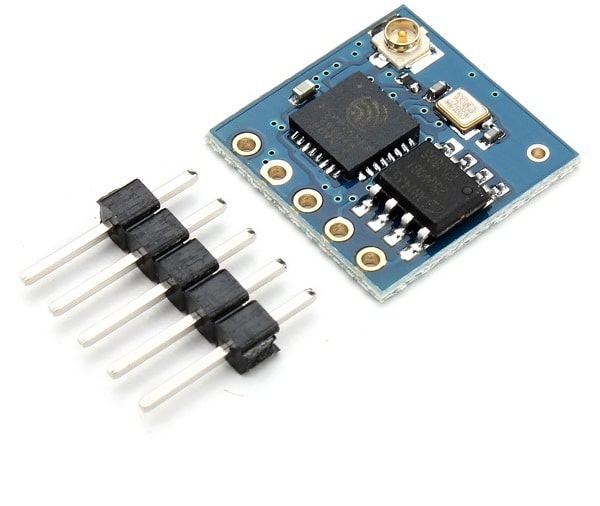
Ai-Thinker ESP-05
This module was developed to provide Wi-Fi connectivity for MCUs such as Raspberry Pi and PIC and other Wi-Fi projects. It, therefore, does not have GPIOS.
It fits into a breadboard without any problems, but there are some complaints about being stuck with the factory set firmware unless you’re prepared to do some serious modifications.
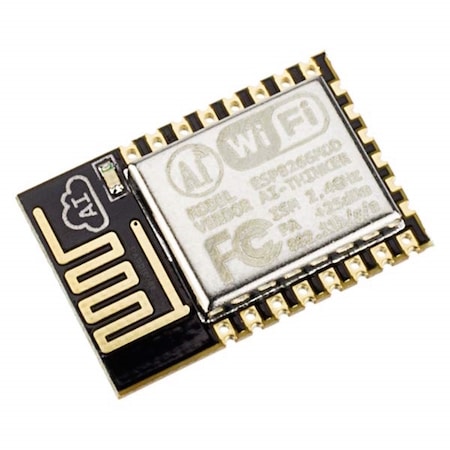
Ai-Thinker ESP-12
This is a more fully featured module with 11 GPIO pins, an ADC, 4Mbits of flash, and 10-bit resolution. However, the module is not breadboard friendly, meaning you’ll need to use an adaptor.
There are two versions available, ESP-12F, which has 20 GPIOS and ESP-12S, which has 14.
Popular ESP8266 Boards
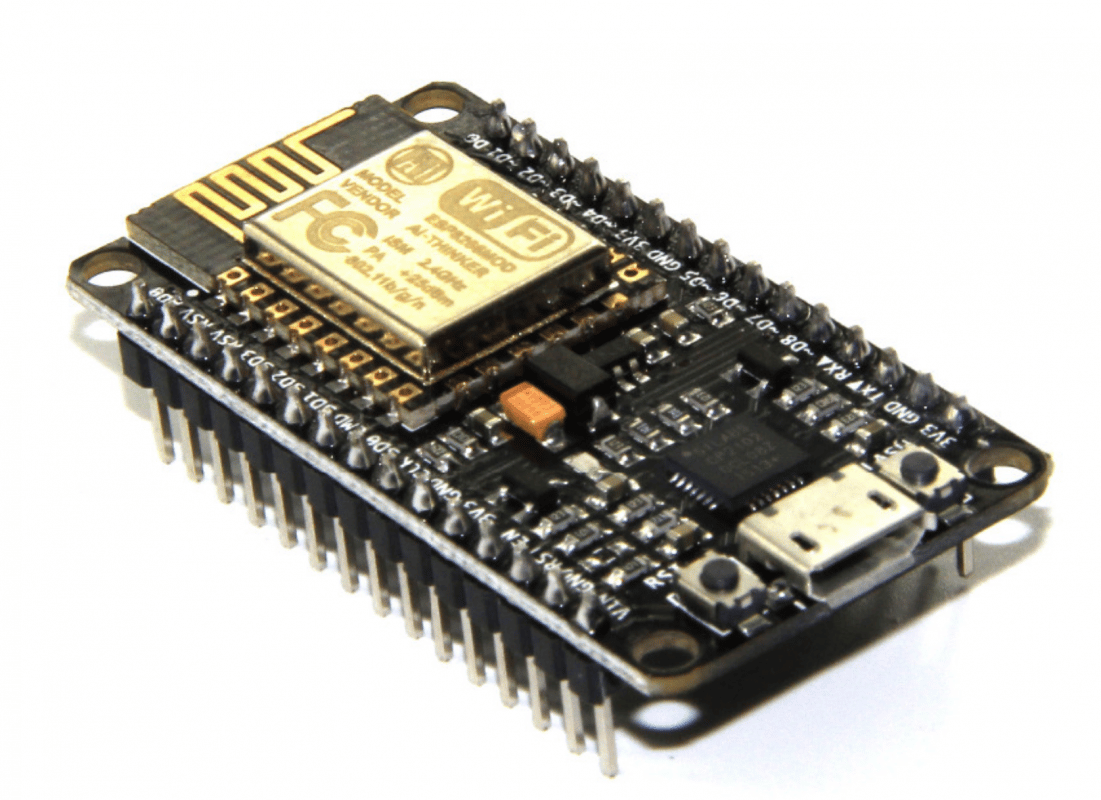
Espressif NodeMCU module V1.0
This board has the ESP-12E module and comes with 4 Mbits of flash and features a row of pins on each side of the breadboard. The board comes with four communication interfaces: SPI, I2C, UART, and I2S, with 16 GPIO and one ADC. The RAM is 160KB, divided into 64KB for instruction and 96KB for data.
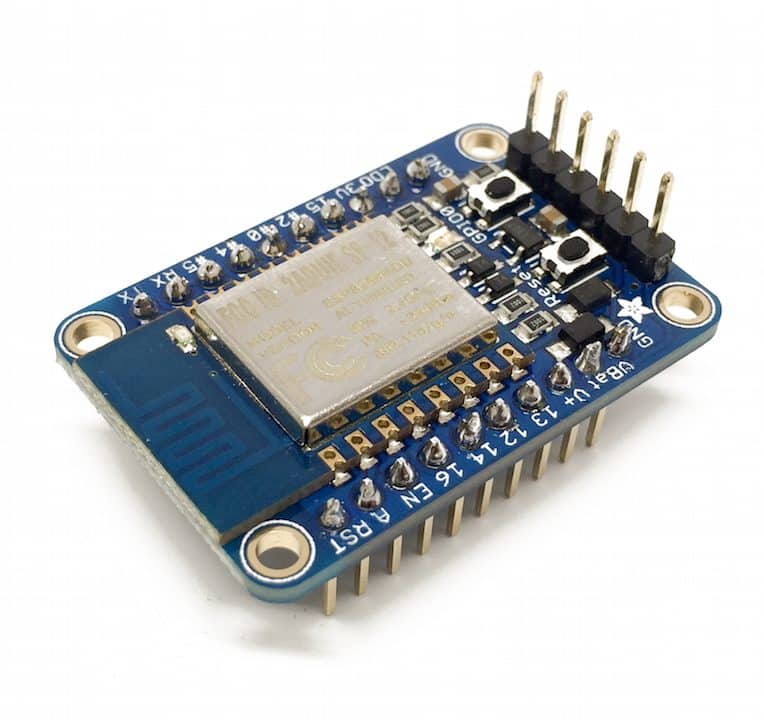
Adafruit Huzzah ESP8266 Breakout
This microcontroller operates at a logic level of 3.3V and is clocked at 80MHz. It comes programmed with the Lua Interpreter, which makes programming simple, with no boot loading required. Alternatively, you can use the Arduino IDE to program it.
There is an onboard CP2104 USB-to-serial converter, therefore you can simply plug it into your computer and upload your code. The board is also lightweight and small, so it’s useful for projects with space constraints.
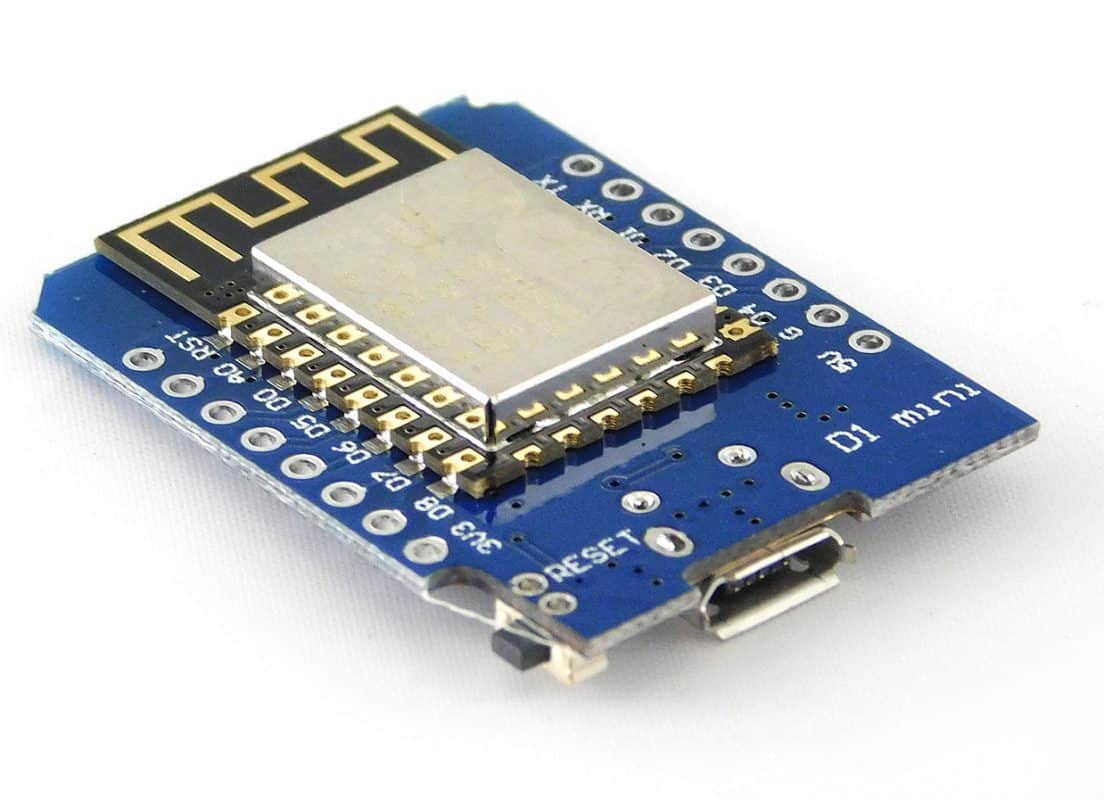
WeMos D1 Mini
The WeMos D1 Mini was designed to be one of the smallest possible development boards for the ESP8266 module. It has a micro USB connection and compatibility with several firmware options.
The ESP8266 WiFi Module is a self contained SOC with integrated TCP/IP protocol stack that can give any microcontroller access to your WiFi network. The ESP8266 is capable of either hosting an application or offloading all Wi-Fi networking functions from another application processor.
How do I connect IoT to ESP8266?
Here are the main steps:
Click on 'New Sensor' to create a communication channel with unique ID and Api Keys. Give a name and description to your sensor.
Add a module for the data you will be plotting.
Copy down the Api Key In value. We will use in the ESP8266 code later.
Why Arduino is used in IoT?
Arduino IoT Cloud is an application that helps makers build connected objects in a quick, easy and secure way. You can connect multiple devices to each other and allow them to exchange real-time data. You can also monitor them from anywhere using a simple user interface.


Make Your own Nodemcu Standlone
*PCBWay community is a sharing platform. We are not responsible for any design issues and parameter issues (board thickness, surface finish, etc.) you choose.
- Comments(0)
- Likes(0)
- 0 USER VOTES
- YOUR VOTE 0.00 0.00
- 1
- 2
- 3
- 4
- 5
- 6
- 7
- 8
- 9
- 10
- 1
- 2
- 3
- 4
- 5
- 6
- 7
- 8
- 9
- 10
- 1
- 2
- 3
- 4
- 5
- 6
- 7
- 8
- 9
- 10
- 1
- 2
- 3
- 4
- 5
- 6
- 7
- 8
- 9
- 10
 More by Sreeram.zeno
More by Sreeram.zeno
-
 Esp12-F Cluster V1.0
The ESP8266 is a low-cost Wi-Fi microchip, with built-in TCP/IP networking software, and microcontro...
Esp12-F Cluster V1.0
The ESP8266 is a low-cost Wi-Fi microchip, with built-in TCP/IP networking software, and microcontro...
-
 TB6612FNG Motor Driver
The TB6612FNG Motor Driver can control up to two DC motors at a constant current of 1.2A (3.2A peak)...
TB6612FNG Motor Driver
The TB6612FNG Motor Driver can control up to two DC motors at a constant current of 1.2A (3.2A peak)...
-
 Sunny Buddy Solar Charger v1.0
This is the Sunny Buddy, a maximum power point tracking (MPPT) solar charger for single-cell LiPo ba...
Sunny Buddy Solar Charger v1.0
This is the Sunny Buddy, a maximum power point tracking (MPPT) solar charger for single-cell LiPo ba...
-
 Diy 74HC4051 8 Channel Mux Breakout Pcb
The 74HC4051; 74HCT4051 is a single-pole octal-throw analog switch (SP8T) suitable for use in analog...
Diy 74HC4051 8 Channel Mux Breakout Pcb
The 74HC4051; 74HCT4051 is a single-pole octal-throw analog switch (SP8T) suitable for use in analog...
-
 Diy RFM97CW Breakout Pcb
IntroductionLoRa? (standing for Long Range) is a LPWAN technology, characterized by a long range ass...
Diy RFM97CW Breakout Pcb
IntroductionLoRa? (standing for Long Range) is a LPWAN technology, characterized by a long range ass...
-
 ProMicro-RP2040 Pcb
The RP2040 is a 32-bit dual ARM Cortex-M0+ microcontroller integrated circuit by Raspberry Pi Founda...
ProMicro-RP2040 Pcb
The RP2040 is a 32-bit dual ARM Cortex-M0+ microcontroller integrated circuit by Raspberry Pi Founda...
-
 Serial Basic CH340G Pcb
A USB adapter is a type of protocol converter that is used for converting USB data signals to and fr...
Serial Basic CH340G Pcb
A USB adapter is a type of protocol converter that is used for converting USB data signals to and fr...
-
 Mp3 Shield For Arduino
Hardware OverviewThe centerpiece of the MP3 Player Shield is a VS1053B Audio Codec IC. The VS1053B i...
Mp3 Shield For Arduino
Hardware OverviewThe centerpiece of the MP3 Player Shield is a VS1053B Audio Codec IC. The VS1053B i...
-
 MRK CAN Shield Arduino
The CAN-BUS Shield provides your Arduino or Redboard with CAN-BUS capabilities and allows you to hac...
MRK CAN Shield Arduino
The CAN-BUS Shield provides your Arduino or Redboard with CAN-BUS capabilities and allows you to hac...
-
 AVR ISP Programmer
AVR is a family of microcontrollers developed since 1996 by Atmel, acquired by Microchip Technology ...
AVR ISP Programmer
AVR is a family of microcontrollers developed since 1996 by Atmel, acquired by Microchip Technology ...
-
 Diy Arduino mega Pcb
The Arduino Mega 2560 is a microcontroller board based on the ATmega2560. It has 54 digital input/ou...
Diy Arduino mega Pcb
The Arduino Mega 2560 is a microcontroller board based on the ATmega2560. It has 54 digital input/ou...
-
 Max3232 Breakout Board
MAX3232 IC is extensively used for serial communication in between Microcontroller and a computer fo...
Max3232 Breakout Board
MAX3232 IC is extensively used for serial communication in between Microcontroller and a computer fo...
-
 Line Follower Pcb
The Line Follower Array is a long board consisting of eight IR sensors that have been configured to ...
Line Follower Pcb
The Line Follower Array is a long board consisting of eight IR sensors that have been configured to ...
-
 HMC6343 Accelerometer Module
The HMC6343 is a solid-state compass module with tilt compensation from Honeywell. The HMC6343 has t...
HMC6343 Accelerometer Module
The HMC6343 is a solid-state compass module with tilt compensation from Honeywell. The HMC6343 has t...
-
 RTK2 GPS Module For Arduino
USBThe USB C connector makes it easy to connect the ZED-F9P to u-center for configuration and quick ...
RTK2 GPS Module For Arduino
USBThe USB C connector makes it easy to connect the ZED-F9P to u-center for configuration and quick ...
-
 Arduino Explora Pcb
The Arduino Esplora is a microcontroller board derived from the Arduino Leonardo. The Esplora differ...
Arduino Explora Pcb
The Arduino Esplora is a microcontroller board derived from the Arduino Leonardo. The Esplora differ...
-
 Diy Stepper Motor Easy Driver
A motor controller is a device or group of devices that can coordinate in a predetermined manner the...
Diy Stepper Motor Easy Driver
A motor controller is a device or group of devices that can coordinate in a predetermined manner the...
-
 Diy Arduino Pro Mini
The Arduino Pro Mini is a microcontroller board based on the ATmega168 . It has 14 digital input/out...
Diy Arduino Pro Mini
The Arduino Pro Mini is a microcontroller board based on the ATmega168 . It has 14 digital input/out...
-
-
mammoth-3D SLM Voron Toolhead – Manual Drill & Tap Edition
256 0 0 -
-
AEL-2011 Power Supply Module
783 0 2 -
AEL-2011 50W Power Amplifier
650 0 2 -
-
-
Custom Mechanical Keyboard
843 0 0 -
Tester for Touch Screen Digitizer without using microcontroller
466 2 2 -
Audio reactive glow LED wristband/bracelet with NFC / RFID-Tags
412 0 1 -
-

























































